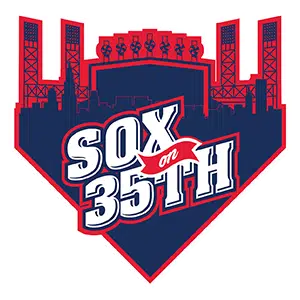The 2019 White Sox have given fans more to cheer about than many had expected. The team’s improved play and the emergence of its young stars—the bat-flipping Tim Anderson, the slugging Eloy Jiménez, and the utterly transformed Lucas Giolito—have contributed to a substantial, year-over-year increase in attendance at Guaranteed Rate Field. Even with this vaunted increase, and despite playing in the third-largest market in the nation, the White Sox rank 20th of 30 Major League teams in average attendance, as of this writing. To be fair, April in Chicago was snow-marred, and May rainfall broke local records. Inclement weather seems not to have affected the Chicago Cubs and their fans, however. The North Siders have drawn nearly one million more paying customers than their South Side rivals. This season, as in each of the past six seasons, demand to see the White Sox ply their trade at home hovers well below capacity.
Paradoxically, such low demand presents the White Sox with a generational opportunity.
Most who support the White Sox are born into their allegiance by virtue of family ties, geography, or both. Even birthright fans, however, can trace the awakening of their autonomous enthusiasm for the South Siders to a childhood experience at the ballpark. For many, that formative, in-person encounter with the sights and sounds of White Sox baseball began with a ticket no one else wanted.
In 1957, my grandfather, Frank Reidy, started a fifteen-year stint as a bookkeeper at M&D Provision, a meatpacking operation near the southern boundary of Chicago’s Union Stock Yards. M&D purchased the same six seats—in the first row of the upper deck, behind the visitors’ dugout—to every White Sox home game. Once in a while, when neither customers nor the bosses could use them, all six tickets would fall to Frank. Frank’s children, my father among them, were the beneficiaries of M&D’s informal ticket benefit. Into the 1960s, sitting in seats no one had claimed on that particular day, my father and his sisters participated in the communal thrills—rising to see a game-winning home run carry over the fence, celebrating with strangers a spectacular diving catch—that put meat on the bones of their affinity for the White Sox.
Throughout franchise history, the White Sox and their sponsors have found right-minded ways—from rewarding the academic success of elementary-school students to honoring first responders—to fill seats that would otherwise sit empty. On July 20, 1957, my father, seven years old at the time, was admitted to Comiskey Park with one of two general-admission passes his eldest cousin had secured, as my father recalls, by showing his Chicago Fire Department badge at the ticket window. On that summer Saturday, my father’s favorite player, White Sox second basemen Nellie Fox, put his team three runs ahead of the Boston Red Sox with an RBI single. In nine innings of work, White Sox hurler Dick Donovan surrendered one hit, a single off the bat of future Hall of Famer Ted Williams. Coverage of Donovan’s complete-game shutout made the front page of The New York Times Sunday sports section. Only 13,671 people, less than thirty percent of Comiskey Park’s full capacity, saw the feat in person.
No matter how many seats around him went unfilled, seeing that particular contest, at a young age, imprinted the White Sox on my father’s consciousness. Every season of his adult life, whether the White Sox were cellar dwellers or postseason hopefuls, my father has purchased tickets to at least a few of the team’s home games.
The 2019 White Sox are already fun to watch, and additional, long-awaited top prospects (here’s looking at you, Luis Robert) may join the team’s active roster before season’s end. The White Sox are not World Series contenders, however, and only a team built to win in October can fill Guaranteed Rate Field in August and September. The problem of insufficient demand presents an opportunity for the Second City’s second franchise to mint die-hard fans in the mold of my father’s fandom. Unwanted Sox tickets will find their way—via parents, elder cousins, and sponsored promotions—into the sticky hands of young children. It’s up to Anderson, Jiménez, Giolito, and their teammates to play their way into the kids’ hearts, to ensure they never forget where and when they first experienced the joy and resurgent promise of White Sox baseball.
As attendance continues to decline across the Major Leagues, and Baseball Commissioner Rob Manfred acknowledges “the explosion of entertainment alternatives,” making lifelong fans (and future paying customers) of these unseasoned ticketholders may mean more to the future success of the White Sox than would their winning more than half of their ballgames for the first time since 2012. Then again, as the Cubs have proven over the past few seasons, winning ballgames is among the surest ways to win the hearts—and the attendance—of young fans.

I must thank you for the efforts you’ve put in penning this website.
I really hope to check out the same high-grade content by you later on as well.
You could definitely see your expertise in the article you write. The world hopes for even more passionate writers like you who aren’t afraid to say how they believe. Always go after your heart.
Your site is very good, I am satisfied with your site
one of the best sites I’ve ever seen, I’ll keep visiting this site
I really like reading the articles that you make, so I want to read them continuously
below